2019 Jeep Cherokee Gets New Engine to Go With New Face
We know from spy photos that the refreshed 2019 Jeep Cherokee will (finally) ditch its awkward stacked headlamps, instead adopting a conventional setup that doesn’t make the vehicle look like it’s squinting. The look is more in keeping with the second-generation Compass and Grand Cherokee.
Expect very little outcry over this sensible and long overdue decision.
However, an updated fascia isn’t the only change in store for 2019. The midcycle revamp also brings a new powerplant sourced from the 2018 Jeep Wrangler, documents show.
As Promised, a Plug-in Kia Niro Arrives Before the New Year
It’s strange that the Kia Stinger — an aggressively styled, rear-drive, twin-turbocharged sport sedan — would get so much limelight when there’s a new Kia Niro Plug-in Hybrid to drool over. All right, that’s the one and only joke we’ll have at the well-regarded Niro’s expense. Obviously, there’ll be little cross-shopping between these two models, as both vehicles fulfill very different missions.
The Stinger’s all about letting your hair down and performing a smoke show in your old high school parking lot. The Niro Plug-in is for the rest of the week, when you’re shuttling your kids around and displaying your green bona fides to your upstanding suburban neighbors. And there’s nothing wrong with that.
Recently unveiled at the L.A. Auto Show, the plug-in Niro takes a competent package (one we hesitate to call a “crossover”) and endows it with a healthy dose of all-electric driving range.
Volkswagen Confirms an I.D. Crozz-based Crossover, a Future Chattanooga Resident
It’s hard picturing the world automakers have painted for us. You know the one — it’s the exciting, progressive near-future vision in which electric crossovers sprout from everywhere all at once, instantly winning the approval of a populace hooked on the convenience of gasoline.
With the all-electric vehicle’s market share hovering at just over half of one percent in the United States, it’s difficult to imagine the needle budging significantly by 2020. Or even 2025. Still, an ever-increasing number of automakers are promising exactly this. Volkswagen’s among them, announcing at this week’s L.A. Auto Show that its horribly named I.D. Crozz concept will form the basis of a new crossover that arrives stateside in 2020, followed two years later by a reborn electric Microbus (or I.D. Buzz, in VW parlance).
PSA to GM: Pay Up for That Dirty Fleet You Sold Us
The handover of General Motors’ money-losing European division to France’s PSA Group seemed complete last July, but now the maker of Peugeot and Citroen cars isn’t happy with the bag it’s holding.
PSA claims the acquisition of the Opel and Vauxhall brands left it on the hook for massive fines, all stemming from looming European emissions regulations and the not-so-squeaky-clean state of its new holdings. The automaker’s now seeking nearly $1 billion from GM — more than half of what it paid for the brands.
BMW Developing Hybrid M Cars, Whether It Wants to or Not
There’s a reason BMW’s M sub-brand is the performance division all other automakers strive to copy. Few letters hold as much clout as “M.” That one little addition to a BMW’s model name promises an overly generous heaping of horsepower, handling, and general sporting prowess.
Continuing to this day, “M” ensures buyers of the presence of a finely-tuned, wildly athletic six, eight, or — once upon a time — 10-cylinder gasoline engine under the hood. Only in recent years has the sub-brand seen new products that threaten to water down the purity of the designation (the X5 M and X6 M), but at least those models stick to the basic power formula.
BMW knows, however, that the gas-only party can’t last forever. The automaker now admits its foray into electrification will not end with its stock models and “i” sub-brand. “M” is poised to get a dose of “e,” and BMW’s not exactly sure how it feels about that.
Another Hybrid Bites the Dust: Toyota Prius V Packs It in After VI Model Years
Okay, the “V” stood for “versatility,” but the largest Toyota Prius family member’s obvious usefulness hasn’t earned it a lasting place in the American automotive landscape. After arriving for the 2012 model year, the lengthened hybrid, which boasted 50 percent more interior volume than its Prius sibling, will disappear from the U.S. after 2017.
Early sales of the Prius V significantly bolstered the volume of the hybrid family, which also includes the Vrtucar-approved Prius C. However, the model’s first full year of sales proved to be the V’s high water mark. Sales declined each year thereafter, and much of the blame rests on another vehicle in the Toyota showroom.
Compression Test: Infiniti Set to Unveil a Variable Compression Engine
We’ve mused on Infiniti’s Variable Compression Engine in the past, calling it everything from a chameleon to the holy grail. Its killer app? The ability to changes the distance the pistons travel in their cylinders by as much as 6 mm, or about a quarter of an inch.
Why is this important? Because it is, arguably, the first major change to the workings of a internal combustion engine in more than a century.
Hyundai Lays Out Its Crossover Plan; Eight CUVs on the Way
After being caught off guard by the American public’s thirst for high-riding, commodious, all-weather vehicles, Hyundai’s planning to make up for lost time.
As part of an effort we’ve known about for a year, Hyundai laid its “build more crossovers” strategy bare on Wednesday. Including the subcompact 2018 Kona, which lands on U.S. shores early next year, the automaker will “debut” eight new or redesigned CUVs over the next two years. Unfortunately, details are threadbare.
Going from Hyundai’s product timeline, the future lineup includes (among others) a new A-segment crossover, a diesel model, and an electric. Already burned, Hyundai’s now covering its bases.
New Subaru WRX STI to Deploy Hybrid Technology?
In an effort to reduce emissions, Subaru is putting everything on the table in terms of its performance-focused WRX STI.
Keeping in mind your humble author is directly translating an interview given to a Dutch website (an activity which requires all of his brainpower), it seems there’s more than a passing chance that the next WRX STI will deploy some sort of hybrid technology in a bid to maintain its performance creds.
Nissan Looks Ready to Bring E-Power to Its American Fleet
There’s no confirmation just yet, but all signs are pointing to the eventual introduction of Nissan’s novel e-Power hybrid system in its U.S. lineup.
We say “novel” because the system isn’t like any gas-electric setup currently on the road. Think of it as a way to cheaply reduce emissions without the worries of limited electric range or the expense of bulky battery packs. Instead, think of the car as a little ship.
Despite Hurdles, Tesla Promises a Semi Truck for Thursday
Unbothered by the constraints of space and time, Elon Musk took to Twitter yesterday, breathlessly announcing a press conference for Thursday. Is the call’s topic set to address Model 3 production troubles? Or, perhaps, provide some insight into the supply chain woes at the Gigafactory? No, dear reader, nothing so mundane.
It’s to announce the Tesla semi truck, which is surely the most urgent topic and best use of resources at Tesla these days.
Low Energi: Production Ends on Ford's C-Max Plug-in, With Hybrid to Follow
It’s a near-silent swan song for a duo of electrified Ford models. The Ford C-Max, which debuted in late 2012 in both hybrid and plug-in hybrid form, hit its sales peak during its first full year on the market, declining every year since.
As Ford Motor Company shakes up its U.S. production landscape — ironically, to bolster production of trucks and SUVs — the ungainly-looking C-Max is on its way to the cemetery. The automaker has confirmed the ceasing of production of the C-Max Plug-in, with the Hybrid variant to follow in the middle of next year.
Dueling Houses: EV Tax Credit Stays Put in Senate Tax Bill
There’s renewed hope among electric car aficionados this morning. That’s because a tax plan unveiled by the U.S. Senate Thursday keeps the cherished (among some circles, anyway) EV tax credit alive, according to details released last night.
Should this part of the Senate’s tax reform proposal make it through to law, EV buyers could continue erasing $7,500 from the window sticker of their gas-free car.
With the EV Tax Credit Threatened, Where Do Green Car Sales Stand Today?
General Motors doesn’t want it gone, highly indebted Tesla certainly doesn’t want it gone, but House and Senate Republicans would love to see the $7,500 EV tax credit die a quick death. In a sweeping tax proposal introduced last week, the credit’s nowhere to be seen.
The problem, according to many green car and auto industry proponents, is that the U.S. EV market would quickly join the tax credit in going belly-up. There’s a movement afoot to save the incentive (and the fledgling market along with it).
Assuming the credit goes the way of disco (and state-level incentives aside), electric cars would be forced to stand on their own environmental merit. It’s something free-market capitalists would love to see, but would it really spell doom for the segment? That depends on who you ask. But it might be helpful to take a look at where the segment stands right now.
That Sucks: Tesla Was Hip to Dyson's Secret Car Plans Before Any of Us
As you know, Dyson, the vacuum/hairdryer manufacturer, is moving into electric vehicles. The company has made plans to introduce a radical example (with new solid-state batteries) to market by 2020 that will suck and blow you away. But you only found out last year, which was long after Tesla Motors caught wind of a fresh competitor on the horizon.
Apparently, an engineer spilled the beans to Tesla’s legal representation around the same time he was being interviewed for a position at the automaker. If you’re wondering if he got the job, he did.
This is the second time Dyson’s plans for EV secrecy went haywire. Its public announcement wasn’t supposed to be until September of this year. However, a slip-up by the British government saw its National Infrastructure Delivery Plan mention that the public would help fund the company in “developing a new battery electric vehicle” — giving away the secret in 2016.
Buick Poised to Become GM's Greenest Brand - If the Public Wants It
The General Motors division, known for past land yachts like the Electra 225, Roadmaster, and Riviera, will become the automaker’s cleanest in the years to come. Whether that holds true in the United States market depends on a lot of things, including whether lobby groups succeed in saving the marked-for-extinction EV tax credit.
Duncan Aldred, vice-president of sales and marketing for GM’s Buick and GMC divisions, claims the near-luxury Buick badge will appear on the company’s future electric vehicles. However, given the shaky state of the EV market in America, new Buicks will head to greener pastures first.
Tesla's Feverish Production Drive Sometimes Means Partial Assembly at Stores: Report
Never has the air of breathless futurism surrounding Tesla taken such a hit. Following a revealing earning report and numerous reports of continuing production bottlenecks, this week wasn’t a good one for either Tesla shareholders or Model 3 reservation holders.
The electric automaker pushed back its 5,000-vehicle-per-week goal to the end of the first-quarter of 2018, rather than the end of this year. Its 10,000-vehicles-per-week goal remains a question mark. Tesla also announced a decrease in Model S and X production to bolster resources for Model 3 builds. In reporting a quarterly loss of $619 million, Tesla made it clear it’s burning through piles of cash in an attempt to smooth out production line hurdles.
Now, a new report sheds light on the frenetic activity occurring inside its Fremont, California factory. One of the claims certainly won’t soothe those worried about a long-standing Tesla concern: build quality.
Say Goodbye to EV Tax Credits Under New GOP Tax Plan
It’s the last thing Elon Musk wants to hear and it’s likely not something General Motors will be too pleased about. Contained within the tax plan introduced by House Republicans Thursday is the elimination of a huge driver for electric vehicle sales — the $7,500 EV tax credit.
Automakers, and especially the two mentioned above, already stood to lose their credits in the near future (there’s a 200,000-vehicle-per-manufacturer cap), but the new tax bill would see the buyer incentive permanently removed, not renewed, as many had hoped. Such a move could slam the brakes on a still-fledgling segment in the U.S.
Let's Go All the Way: Chevrolet Bolt Increases Its Lead Over Faltering Volt
Never mind competing with EVs from other manufacturers. With each passing month, it becomes ever clearer that the all-electric Chevrolet Bolt competes directly with another General Motors stablemate: the Chevrolet Volt.
In October 2017, the Bolt — first sold last December and available nationwide since mid-summer — pushed into second place out of all plug-in vehicles sold in the United States, muscling out the Tesla Model X in the process. In doing so, it increased the sales gap between it and the range-extended Volt.
When buyers hit up a “dinosaur” legacy automaker for a green car, it seems they prefer going all the way — once-revolutionary gas generator be damned.
The Rotary's Returning, Says Mazda, But There's Some Things to Take Care of First
For five years now, Mazda has hinted, then promised, then reassured us that a rotary-powered sports car will return to the company’s lineup, ready to fill a spot left vacant by the departing RX-8 in 2012.
We’re still waiting and, Mazda now informs us, we’ll be waiting quite a bit longer. While the cylinderless gasoline engine holds promise as a range-extender in electrified vehicles (something powertrain chief Mitsuo Hitomi feels is a definite future use for the powerplant), that’s not something Wankel fans want to hear. They want to spin that engine up to eleventy billion rpm and drop the clutch.
It’ll happen, says Mazda’s senior managing executive officer, Kiyoshi Fujiwara, but something’s cropped up that pushed the rotary’s return to the back burner. That thing is the company’s gasoline compression ignition engine, the Skyactiv-X.
Scientists Reveal What We Already Knew: Economy Cars and Gas Guzzlers Love Each Other
Picture a suburban street in an average middle class neighborhood. In each driveway sits two vehicles, as tradition states no modern American suburban family can make do with just one. Think about those two vehicles for a minute now.
Are they evenly matched? In other words, are they the same size? Do they fulfill the same requirements laid out by a single segment? Doubtful, and your mind’s eye already made this clear. One’s a Safari or Caprice wagon, the other’s a Datsun 210. One’s a Corolla, the other, a Suburban. A Focus and an F-150, and so on.
Does owning an economy car compel new car buyers to splurge when new-car buying time rolls around? Logic, and now science, says yes.
GMC Expands Fuel-saving Sierra 1500 Option to the Rest of the USA
As Fiat Chrysler’s Ram division enjoys wearing the full-size pickup fuel economy crown with its now-legal-again 1500 EcoDiesel, and as Ford throws turbo V6s and 10-speed automatics at everything, what’s General Motors supposed to do to greenwash its truck fleet?
Easy. Simply offer customers in all 50 states a rare option previously available only in California.
Any Electric Mazda Will Actually Be a Toyota
Of all automakers, no company holds out hope for the gasoline engine’s longevity quite like Mazda. Not only does Mazda anticipate many decades of continued hydrocarbon-fueled driving, it’s also ensuring gas stays viable by inventing a new Skyactiv engine that (supposedly) uses much less of it. That motor, a first-of-its-kind gas compression ignition four-cylinder, debuts in 2019.
For now, Mazda’s North American lineup remains pure in terms of propulsion. The promised CX-5 diesel is taking its sweet time showing up, and neither a hybrid or EV can be found among the model ranks. That will soon change, but given Mazda’s size and finances, it won’t be a Mazda platform underpinning the next Mazda EV.
California's Current Strategy to Ban Internal Combustion Engines
California has been toying with the idea of banning internal combustion motors for a couple of years now. While the concept is gaining popularity across the globe, the ban itself is a bit misleading. Regions in favor of the idea aren’t really pursuing an outright ban on engines that burn gasoline; they’re trying to mandate electrification and reduce emissions via non-traditional powertrains.
In April of 2015, California Governor Jerry Brown announced, “If the federal government can’t get it right, we in California are going to take care of business.” With the Trump administration making strides to roll back regulatory efforts, it appears the state of California is ready to pop in some Bachman–Turner Overdrive and begin taking care of said business.
More Internal Combustion Abandonment: Mazda Plans Fully Electric Fleet By 'Early 2030s'
Mazda recently announced the testing of its Skyactiv-X compression ignition engine, which promises to burn gasoline with diesel-like efficiency. If it hits its projected launch date of 2019, it will become the first mass-produced motor of its type and is likely to be showered with praise from environmentalists and enthusiasts alike.
However, as we progress deeper into the millennium, it’s becoming evident that more and more automakers are willing to embrace electricity as the next solution to efficiency. That makes Mazda a bit of an oddity, maybe even a dinosaur, and we were wondering when the company would give in to electrification. Especially since it has already partnered with Toyota to tighten its grasp on the technology.
With Mercedes-Benz Going Electrified, How Does the Company Avoid Tanking?
Everyone’s doing it. It’s as popular as the fidget spinner and Pokémon Go crazes all those years months ago. In a rush to signal their environmental bonafides and display their dedication to the Next Big Thing, luxury automakers are tripping over themselves in an effort to promise an all-electrified model lineup as soon as technology and finances allow.
This time, it’s Mercedes-Benz. The world’s oldest car brand doesn’t want its rivals cashing in once governments around the globe start turning off the fossil fuel taps. So, earlier this week, Daimler CEO Dieter Zetsche stepped up and made a promise we’ve heard ad nauseum as of late: every model in the brand’s lineup will soon sport some form of electric propulsion, be it a hybrid setup or full-on battery electric powertrain.
For Mercedes-Benz, this means 50 hybrid or EV models, including at its irrelevant-to-Americans Smart brand. The move isn’t without a steep cost, however — Daimler is bracing for a slashing of vehicle profit margins. In some cases, the green collected from green cars could be half that of a gasoline Benz. What to do?
Porsche Mulls Diesel Death for Entire Fleet, Starting With the Cayenne
This season’s must-have fashion for high-end automakers is the proposed elimination of diesel-powered engines. Volvo may keep theirs, but only if they’re supplemented by an electrified unit after 2019, and the same is true for both Jaguar and Land Rover. Mercedes-Benz hasn’t been quite so overt about its own diesel death, but it is pressing aggressively toward mild hybrids.
However, no manufacturer has the same incentive to distance itself from diesels as Volkswagen Group. Porsche, Audi, and VW all suffered from the company’s emissions scandal. Moving away from the fuel was to be expected, but Porsche’s chief executive hints diesel death may occur within a year as the company decides the future of the next-generation Cayenne.
When we previewed the new SUV last month, Porsche mentioned a pair of turbocharged gasoline engines but no diesel option. That was because the brand is still investigating whether diesel even has a place in the Cayenne and, by extension, the rest of its fleet.
Tesla Discovers an Obvious Place for Urban Owners to Fuel Up
Until now, Tesla’s growing network of Supercharger stations was generally aimed at the long-distance crowd. If a (very) premium-priced sedan can’t make the five-hour trip to your sister’s house for Thanksgiving, well, second thoughts might crop up about that purchase.
To accomplish the goal of Tesla proliferation, much of the automaker’s fast-charge network sprouted up in locales convenient for travellers. Places like Holiday Inn Express parking lots, restaurants, visitor centers, and Macadoodles Fine Wine & Spirits in Springfield, Missouri. In the Midwest, hungry travellers can hop off the Interstate and charge up at Meijer while shopping for juice boxes and potato wedges.
However, logic (and infrastructure) states that the majority of Tesla buyers, current and future, live in large cities and don’t leave town all that often. They’re also more likely live in condos with garages free of any plug-in points. Tesla’s latest round of Supercharger construction takes this into account, dropping the fast-charge stations directly where those urbanites inevitably show up once a week.
Up Close With the Workhorse W-15, an EV Truck Headed to U.S. Driveways
As part of National Drive Electric Week, the Cincinnati-based Workhorse Group displayed their prototype W-15 EV pickup truck at the local Cincinnati event. TTAC got some more information on the future of this pickup, as well as a turn behind the wheel.
Come have a look.
Nissan Leaf Range Upgrade Remains a Mystery of Our Time
A week after the unveiling of the second-generation 2018 Nissan Leaf, we know for sure that value, value, value! is the upgraded model’s strongest selling point.
No longer offering a paltry 107 miles of range, the new Leaf sports a just-good-enough 150 miles of driving distance, or so Nissan believes. Of course, knowing that Chevrolet’s Bolt and Tesla’s Model 3 offer significantly better range, the Leaf’s priced to sell. For $29,990 plus delivery, and minus a $7,500 tax credit, Nissan figures the base S model is enough to tempt cost-conscious EV buyers who don’t want it all.
But there’s a longer-ranged Leaf in the works. For 2019, buyers can opt for a stepped-up 60 kWh battery, but just how far a so-equipped Leaf can drive on a single charge differs depending on the Nissan exec doing the talking.
2018 Nissan Leaf - The Industry's Oldest Mainstream Electric Car Turns Over a New… Well, You Get the Idea
Back in December of 2010, if anyone can remember that hazy, long-ago time, an oddly shaped five-door rolled out of the minds of Japanese executives and onto U.S. dealer lots. Unlike its fledgling electric forebears, the 2011 Nissan Leaf promised practical gas-free transportation for the whole family, bolstered by a warranty from an established automaker and 73 miles of EPA-approved driving range.
The industry had just taken a big step. However, the Leaf, despite racking up an impressive model-life sales total, soon found itself leapfrogged by competitors with greater range and more conventional styling. By the time 2017 rolled around, the Leaf’s 107-mile range and now-dated body stood in stark contrast to sleeker models delivering 200 miles of driving from every turn at the plug.
Nissan wants to change that. For 2018, the second-generation Leaf arrives with greater — but not class-leading — range, a new body (with a familiar profile), and a lower entry price. The automaker clearly feels there’s thrifty EV buyers capable of saying “no” to the Tesla Model 3 and Chevrolet Bolt.
Ford's Planning to Make Its Largest SUVs Greener (and Its Smallest a Lot Greener): Report
Despite festooning its large utility vehicles with the latest and greatest fuel-saving technologies — turbocharging, dual injection, 10-speed automatics — Ford isn’t finished reducing the thirst of its big SUVs.
According to sources with knowledge of the automaker’s product plans, the push for better MPGs includes giving those gas-fueled engines a break once in awhile. Care for an extra motor in your Expedition or Navigator?
The Smog State: Vehicle Emissions Still Rising in California, Despite Regulations
Despite aggressive regulatory efforts to counter pollution, California emissions from on-road transportation rose by roughly 4.4 million metric tons of carbon dioxide in 2015 vs one year earlier, according to the San Francisco-based non-profit Next 10. The state also had the dubious honor of housing six of the country’s 10 most polluted cities, based on data from the American Lung Association’s annual “State of the Air” report released last April.
While topography plays a major role (cities located in valleys and basins have a tendency to trap air pollutants), much of the problem has to do with Californians driving more. Let’s face it, gas is cheap and public transit options are typically the less-enjoyable option in all but the most densely packed cities. In fact, the Los Angeles County Metropolitan Transportation has seen declining ridership over the last two years — even though the city has a major issue with traffic.
Hyundai Rolls Out Green Roadmap, Promises Three EVs by 2022 and an Electric Kona Next Year
Hyundai isn’t about to let Tesla hog all the eco glory. The automaker has announced a near-term roadmap for green vehicle production, promising 31 hybrid, plug-in hybrid, electric, and fuel cell models by 2020, shared between the Hyundai, Kia, and Genesis brands.
Having already joined the fray with its compact Ioniq, offered in hybrid, plug-in, and EV flavors, the company wants a larger presence in the fledgling (but growing) EV scene. To this end, it’s planning long-range, high-end EVs built on a dedicated platform, as well as a much-needed crossover that dispenses with gas stations altogether. The Kona, which arrives in the U.S. in gas-powered guise this winter, serves as a body donor.
Will a 242-mile electric crossover give Elon Musk reason to sweat?
2018 Jeep Wrangler Specs, Options Leaked: Full-time 4WD on the Way?
Screenshots of preliminary information added to the Fiat Chrysler Automobiles dealer network computer system suggest the next-generation Jeep Wrangler, due for a late-November reveal, breaks with tradition in more than a few ways. The largest break involves how the 2018 Wrangler puts its power down to all four wheels.
The dealer system images, shared by JL Wrangler Forums, show the Wrangler adopting a Selec-Trac full-time four-wheel-drive system, among other drivetrain details. Is this a goodbye to the manly transfer case lever?
Mazda Going (Mostly) Sparkless With Skyactiv-X Gasoline Engines, Starting in 2019
There’ll still be spark ignition available, but Mazda doesn’t expect you’ll get a whole lot of use out of it. With its just-revealed Skyactiv-X engine technology, the gasoline-loving automaker has added a new way of making power to the automotive realm: the compression ignition gas engine.
It’s something we’ve known about for a while, but today saw its confirmation. Mazda’s Skyactiv-X engine, bound for its vehicle lineup in 2019, adopts technology forever associated with diesel engines and combines it with a lighter, much cleaner fuel. Apparently, going green needn’t require batteries and AC motors.
GM Testing a Bolt-based Buick Crossover With Focus Groups: Report
When you think about it, it all adds up. There was no way the powertrain of the Chevrolet Bolt, America’s first reasonably priced long-range electric vehicle, was ever going to remain solely the domain of one vehicle. General Motor’s CEO, Mary Barra, alluded to as much following the Bolt’s introduction.
While the 238-mile Bolt is already sold in Europe as the Opel Ampera-e, and in China as the Buick Velite 5, those vehicles don’t amount to much more than simple badge swaps. However, a new report claims U.S. buyers could see a Buick crossover based on the Bolt, and soon.
Sergio Warms up to Electrification, Even As FCA's Light-duty Diesels Get the Green Light
It’s no secret that hybrids and fully electric vehicles are about as appealing to Fiat Chrysler Automobiles CEO Sergio Marchionne as a crisp, button-up shirt. The FCA boss once famously railed against his company’s sole electric offering — the tiny, money-losing Fiat 500e — for losing $10,000 for every unit sold. Placating California doesn’t come cheap.
Still, Marchionne isn’t alone in distrusting the plug. Subaru and Mazda have shown a similar aversion to electrification, though even those automakers concede it’s a losing battle. In a conference call with investors late last week, Marchionne admitted defeat, outlining a plan to add electric motors to a significant chunk of FCA’s fleet in the coming years. One division stands to go the way of Volvo, with electric motors planned for each new car introduced after 2019.
What prompted the shift in thinking? Diesel, and the public’s growing distrust in compression-ignition engines.
Tesla Model 3 Launches at $44K in Long Range Form; Cheaper Version to Follow
Perhaps the most anticipated automotive event of the year (Tesla disciples might say millenium) took place in California last night, as electric car guru Elon Musk handed over the first 30 production Tesla Model 3 sedans to customers — most, if not all, of them employees — at a glitzy, livestreamed event.
Eyesight was restored to the blind. Others rose from their wheelchairs, walking for the first time in years. Okay, that’s not true, but the depths to which some Tesla fans deify Musk and his car company cannot be understated. Certainly, after seeing the final production model, learning its specifications, and hearing Tesla’s lofty production plans, even a cynic drowning in a vast ocean of media-driven hype can’t help but feel impressed.
Hailed as the first affordable, long-range, mass-produced electric car — a crown stolen by the Chevrolet Bolt months ago — the Model 3 will retail for $35,000 before federal incentives, but not just yet. The only version available at launch is the $44,000 Long Range model, good for 310 miles of range per charge.
The 220-mile base sedan, which carries that vaunted lower sticker price, won’t be available until this fall. So, what can the roughly 500,000 reservation holders expect? If they’re on a budget, black had better be their favorite color.
2017 Jeep and Ram EcoDiesels Are Legal Again, Baby!
The light-duty Chrysler diesel is back. After a bevy of undeclared emissions control devices sank Fiat Chrysler Automobiles into a cauldron of hot water back in January, U.S. regulators have certified 2017 models powered by the company’s 3.0-liter EcoDiesel V6.
Having spent the last half-year cooling their heels, unsold Ram 1500 and Jeep Grand Cherokee oil-burners are once again legal for sale to torque- and economy-obsessed buyers.
FCA earned itself plenty of bad PR after the Environmental Protection Agency all but accused the automaker of a Volkswagen-like scheme to deceive the U.S. government and cheat on emissions tests. The undeclared software amounted to a violation of the Holy Grail of environmental legislation: the Clean Air Act. Software tweaks have now rendered the engine compliant, earning a certificate of conformity (also known as a thumbs up) from the EPA.
Too bad about that Justice Department lawsuit.
Older Volkswagen Diesels Potentially Saved From Execution After EPA Approves Fix
Nearly two years after the mother of all automotive scandals yanked nine years’ worth of Volkswagens out of the “law-abiding citizen” category and into the environmental slammer, U.S. regulators have approved a fix for older VW 2.0-liter diesel cars.
The fix, which many believed would never happen, received an official thumbs up from the Environmental Protection Agency and California Air Resources Board today. The move means potential salvation for 326,000 otherwise doomed VW and Audi vehicles in the United States.
State EV Rebates on Hiatus in California (Unless You're Poor)
California wants to fund more generous rebates for electric vehicle buyers as part of a massive agenda to support the adoption of zero-emission vehicles. In addition to federal incentives, the state has its own rebate program and has made plans to add additional state-sponsored tax breaks for EV buyers.
However, according to the Center for Sustainable Energy, California’s Clean Vehicle Rebate program has almost run out of funding — for a second time — after Governor Jerry Brown neglected to include it in the state budget.
As a result, the program can no longer offer rebates to purchasers of zero-emission vehicles and has placed those who made a purchase after June 30th on a refund waiting list. It’s bad news for anyone in California who wanted to by an electric car. Well, unless you’re poor, because the State of California really wants to convince low-income households to buy electric for some reason.
EPA Says a Chevrolet Volt Is Barely Greener Than a Toyota Prius
If the Chevy Volt and Toyota Prius are presented as solutions to cut greenhouse gas emissions, it may be a toss-up as to which one wins.
This is according to the U.S. Environmental Protection Agency’s fueleconomy.gov website, which lets consumers determine tailpipe plus upstream emission. The difference on a nationally averaged basis is negligible, while regional variations see one car or the other pulling ahead.
Mercedes-AMG Fans Need to Learn a New Number - '53'
While we knew Mercedes-Benz’s AMG sub-brand had plans to dabble in electrification for upcoming performance models, details of what that could mean for the sub-brand’s products remained pretty thin on the ground.
Daimler R&D head Ola Källenius explained back in January that future AMG-badged vehicles will gradually become “more and more electric.” Never mind the limited-production Project One hypercar that’s in the works — that model is just a plaything for the Dubai set. Well, now we know exactly what AMG has planned for the new rung in its model range, and it indeed makes use of charged particles to lend some extra grunt to the overall package.
It also brings a very sweet inline-six to the table. Baby steps, people.
California Considering Making Electric Cars Cheaper at the Dealership
Federal tax credits for electric vehicles won’t last forever, especially under the Trump administration. While it’s difficult to quantify exactly how many people saw the $7,500 rebate as the deciding factor to “go green,” there is little doubt that it factored into the final purchasing choice of some buyers.
California has made the promotion of zero-emission vehicles a matter of great concern. With General Motors, Nissan, and Tesla all gradually approaching the 200,000-unit quota for vehicles eligible for the tax rebate, the state doesn’t want to see buyers lose purchasing incentives prematurely. With that, California is considering a bill that would provide discounts to EV shoppers at the time of purchase, essentially reducing the sticker price before the car even leaves the lot.
Ford's Latest Venture Involves Rear-Wheel Drive and Zero Emissions
Let’s say it altogether: Mobility! That’s what Ford Motor Company is up to in the tech-obsessed Millennial enclave of San Francisco. No longer will you have to turn to a truck, SUV or Mustang for rear-wheel Blue Oval motivation, and emission levels from the automaker’s latest vehicle depend solely on where the rider ate.
Yes, Ford has diversified itself right into the realm of bicycles, but don’t think for a second you’ll be able to take one home for a quick custom job. These rides must remain factory stock. While the automaker’s plan to blanket the Bay Area in bicycles might seem like a quick way to score green points for the Super Duty maker, there’s actually a team devoted to creating more of these ventures.
Still, Ford’s new GoBike network isn’t immune from the same challenges faced by its automobile division. You see, competition looms on the horizon. Competition with more power.
Fiat Chrysler Seems to Have Cleared the Pacifica Hybrid Production Hurdle
Conflicting reports claim Fiat Chrysler Automobiles has either restarted, or is poised to restart, production of the Pacifica Hybrid minivan in Windsor, Ontario.
This comes after a tumultuous month for the automaker’s headline-grabbing plug-in minivan. First, a voluntary safety recall saw all Pacifica Hybrids built to date recalled for faulty inverter diodes, following incidents in which several vehicles lost power while underway. The recall then led to the shadowy shutdown of hybrid minivan production.
Fiat Chrysler Shuts Down Pacifica Hybrid Production Amid Safety Recall: Report
Despite being lauded for its high level of content, smooth ride, and all-electric range, Chrysler’s plug-in hybrid minivan has hit a large roadblock. After voluntarily recalling all Pacifica Hybrids due to a safety defect that could see the minivan go dark at inopportune times, it seems the assembly line has ground to a halt in Windsor, Ontario.
A recall earlier this month saw Fiat Chrysler Automobiles call back 1,368 vehicles in the U.S. and 309 in Canada following complaints of loss of propulsion. The issue reportedly stems from defective inverter diodes. While the wonky electrified powertrain hasn’t resulted in any crashes or injuries, electrified cars that suddenly stop sending current to the motor aren’t something customers or the automaker can tolerate.
It’s a serious stumble for FCA’s green halo car.
Volvo Makes It Official: Polestar to Become a Standalone Brand
Think of it as a green brand known for producing some very blue cars. Polestar, Volvo’s performance wing, will be spun off into an electrified automaker under a new plan from the Swedish car manufacturer.
Expected to do battle with the likes of Tesla and BMW’s i sub-brand, future Polestars — like their gasoline-powered predecessors — will stake out space in the performance arena, only this time in a different niche.
Buying an Electric Vehicle Just Got Cheaper (Again) in Texas
The State of Texas arouses visions of oil-rich tycoons with dysfunctional families, a fierce adherence to individual liberties, and vast quantities of trucks bearing the names High Country, Longhorn, Laramie, and King Ranch. While agriculture and industry play a major role in the state’s economy, not every vehicle in the Lone Star State’s fleet relies on gas or diesel.
With numerous major urban centres and a good economy, electric vehicles have made inroads in Texas over the past several years. Soon, a resurrected incentive could light a fire under EV sales. Well, except for one brand.
Future-proofing: Cummins Wants to Sell You More Than Just Diesels
It’s hard to hear the name Cummins and not immediately think of a Ram pickup struggling valiantly to pull a gnarled tree stump out of the unyielding earth. Certainly, the company’s diesel inline-six and V8 engines are to the truck world what Nike is to professional sports.
While Cummins’ fossil fuel-powered engines and power systems show no signs of becoming passé, a company ignores the future at its own peril. The green revolution is afoot, we’re told, and internal combustion power will one day occupy the niche currently inhabited by electric propulsion. With this in mind, Cummins has a plan.
Can EVs Survive Without a Government Check or Tax Break? Not in Denmark
Despite the protestations of many members of the green car crowd, dollars and cents do seem to play a major role in the motivation to purchase an electric or plug-in hybrid vehicle. Right now, EV proponents and domestic automakers are worried the U.S. won’t renew the green car tax credit — a segment-boosting incentive that shaves thousands off the price of a new electric vehicle.
Some would argue if green car buyers are really devoted to the planet’s health, purchase price wouldn’t be an issue (assuming the buyer’s bank balance is sufficient). Individuals being what they are, motivations and circumstances will vary. Still, no one can argue that a tax credit doesn’t sweeten the pot, just as dealer incentives on the hood of a truck help move sluggish inventory.
In Denmark, however, lawmakers have discovered that once-steady sales of EVs will slow to a trickle when green vehicle buyers are treated like regular car buyers.
Canadian Province to Become Used Nissan Leaf Dumping Ground
The Nissan Leaf, which burst onto the scene in late 2010 as one of the first mass-market electric vehicles, hasn’t changed much since its introduction. Until very recently, driving range sat well below the three-figure mark. And as its technological edge dulled, the Leaf gained a reputation as one of the fastest-depreciating vehicles on the market.
If you find yourself living in a certain jurisdiction, Nissan and a mid-level government has now made a purchase of a used Leaf far more attractive than it once was. Message to the U.S. and the rest of Canada: Quebec wants your old Leafs.
After Snatching Away the Perk, Tesla Returns Free Charging to Certain Owners
Chatty Tesla owners who compel their friends and family to consider buying a Model S or X are apparently behind the company’s U-Turn on paid Supercharger use.
At the beginning of the year, Tesla, in a bid to fund a doubling of its fast-charge network, withdrew a big perk from the purchase of one of its vehicles: free Supercharger use. No longer would new buyers be able to sail off in their new Tesla, confident in their ability to juice up at one of the 750-plus stations scattered across North America. Owners who purchased their vehicle prior to January 1st were grandfathered.
Supercharger hogs were also slapped with an “idling” fee, all in the hopes of freeing up space at the stations. While the pricing structure remains — new buyers receive 400 kWh of annual free charging with their purchase, after which a variable fee applies — there’s now a way to get unlimited free power.
Freed From Gasoline, the 2017 Smart Fortwo Drops Its Price and Adds Range
Will anyone notice? Mercedes-Benz certainly hopes so, as it recently choose to ditch gasoline powerplants altogether and make the Smart sub-brand an all-electric affair.
The automaker announced pricing and specifications for its 2017 Smart Fortwo Electric Drive coupe and convertible today, billing the two-seater as one of the cheapest EVs you can buy. The droptop variant remains the only electric convertible you can get your hands on, should that be your thing.
While many scratch their heads and wonder why Smart continues to exist in North America, the automaker hopes to entice consumers with a lower starting price and added range.
With Nothing Electric in Its Lineup, Subaru Considers an Easier Solution
With the exception of Mazda and — until its Outlander PHEV finally lands on U.S. shores — Mitsubishi, Subaru remains one of very few automakers to completely eschew electrified powertrains.
Despite lacking any fully electric, plug-in hybrid or hybrid model (the unloved Crosstrek Hybrid met a quiet death last year), Subaru’s U.S. customer base continues to expand at a rapid clip, but a gas-only strategy can’t survive forever. Environmental regulations the world over insist Subaru should follow the lead of its rivals and build something without pistons.
Well, Subaru plans to. However, unlike many of its rivals, the automaker has indicated it might take a different path towards this goal.
China's 2017 BYD E6 Granted CARB Certification, But Retail Sales Still a Question Mark
For those of you not glued to the latest in Chinese electric car news, the BYD (Build Your Dreams) E6 was the best-selling electric vehicle in the world’s most populous country last year. Forget about Nissan or Tesla — BYD is the real electric stud overseas.
The E6 is a conventional-looking four-door crossover (or tall hatch, if you prefer) offered in a number of markets, including the United States. However, here the E6 is marketed as an “electric taxi” and offered only to fleet buyers. A handful have arrived already, but the Berkshire Hathaway-backed automaker has larger plans for the U.S.
Nissan Considers Bringing Its Unusual E-Power Technology to America
The success of Nissan’s e-Power system in the Japanese-market Note hatchback has company brass considering a trans-Pacific trip for the technology.
Should it arrive stateside, e-Power stands to give Nissan an edge in low-priced electrification — potentially undercutting the price of compact hybrid rivals by thousands. Unlike conventional hybrids and plug-in models, Nissan’s system burns gasoline every moment of the drive, despite an electric motor doing all the pulling work.
Stop Being So Mean to Diesels, Pleads Jaguar Land Rover Boss
Ralf Speth isn’t having it. Across Europe governments are cracking down on the use of diesel vehicles in a bid to lower air pollution, especially in the Jaguar Land Rover CEO’s own country. London has announced plans to levy stiff charges on anyone driving a diesel-powered vehicle through central areas of the capital starting in early 2019, adding fuel to the anti-diesel fire. Paris, Berlin and Athens also plan to ban the technology.
With compression ignition still a significant part of the automaker’s engine lineup — both in Europe and North America — Speth recently defended the technology’s importance in a finger-pointing spiel. The world needs diesel, he claimed, and the media (and Volkswagen) haven’t done anything to help the situation.
Automakers Want Higher Octane Gas and Are Starting to Do Something About It
Higher-octane fuel holds more energy than bargain basement gasoline, giving it the potential to generate more horsepower and deliver highly marketable fuel economy figures to automakers. It should be at the top of every car manufacturer’s wish list. But, because an extra-high octane rating would warrant an extra-large bill at the pump, muscle car owners are left hunting for that one station that sells 94.
Unlike Europe, it’s a low-octane lifestyle here in North America, though hushed, tentative first steps are being taken to give car manufacturers what they so desperately crave.
Still, no automaker wants to say it.








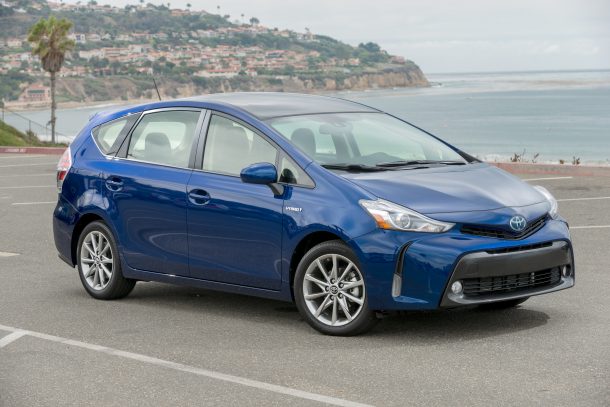
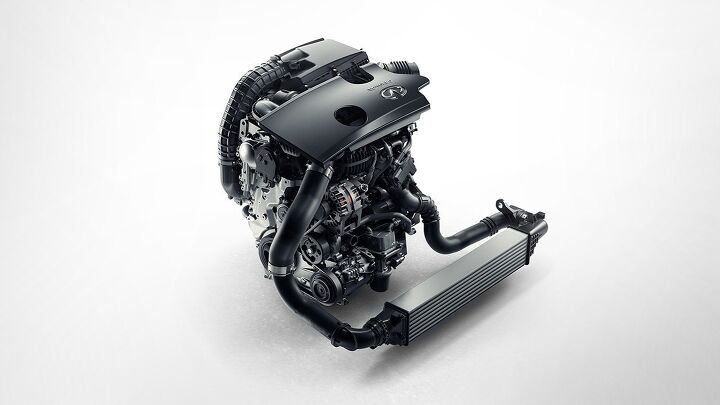

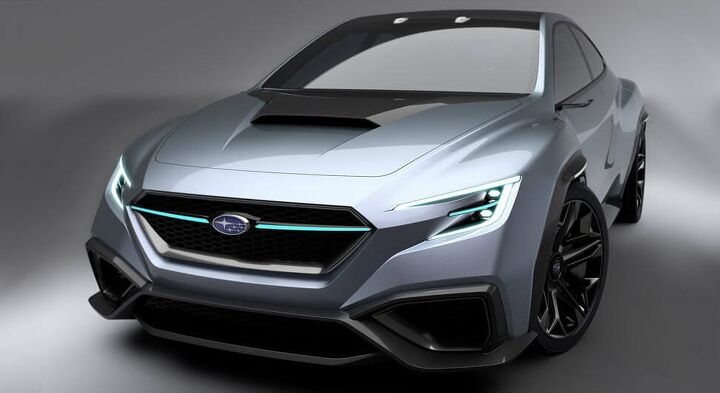



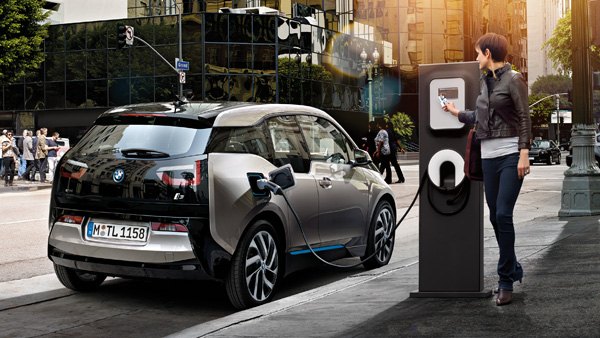









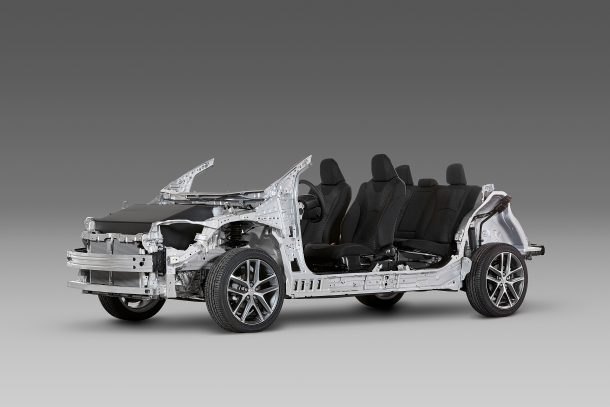
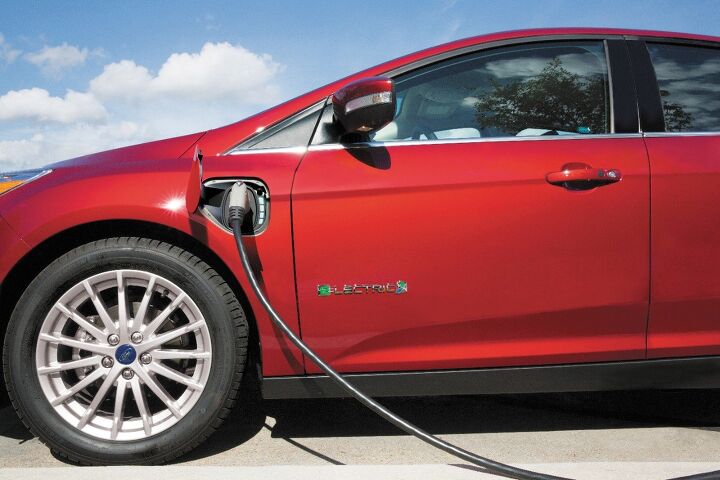
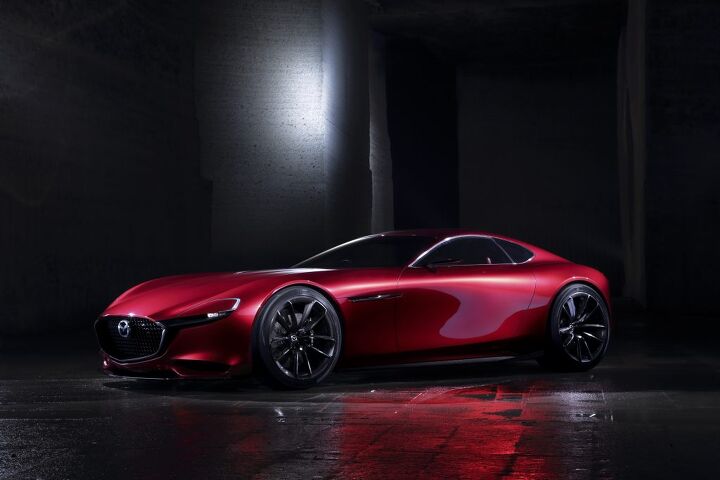


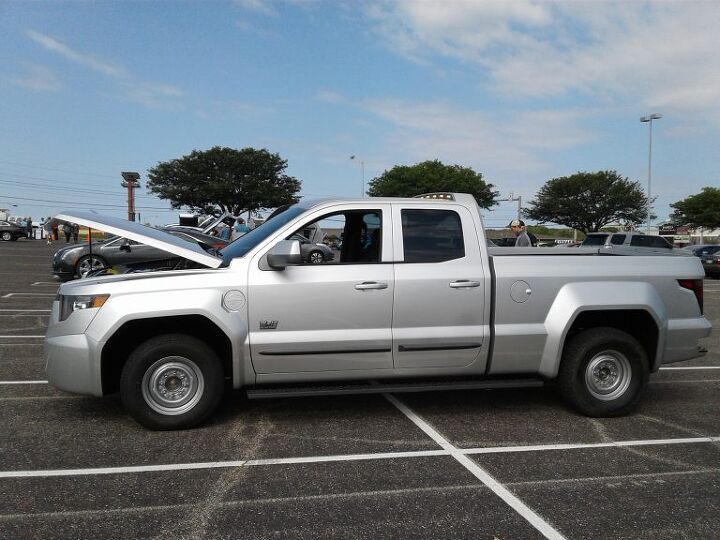

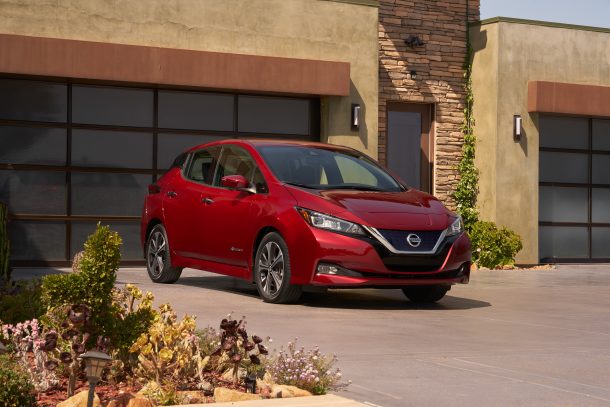








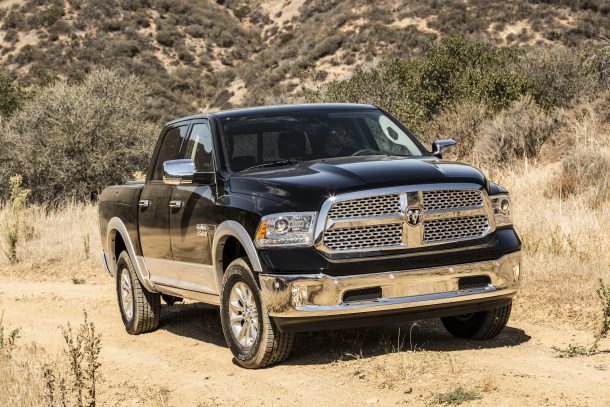


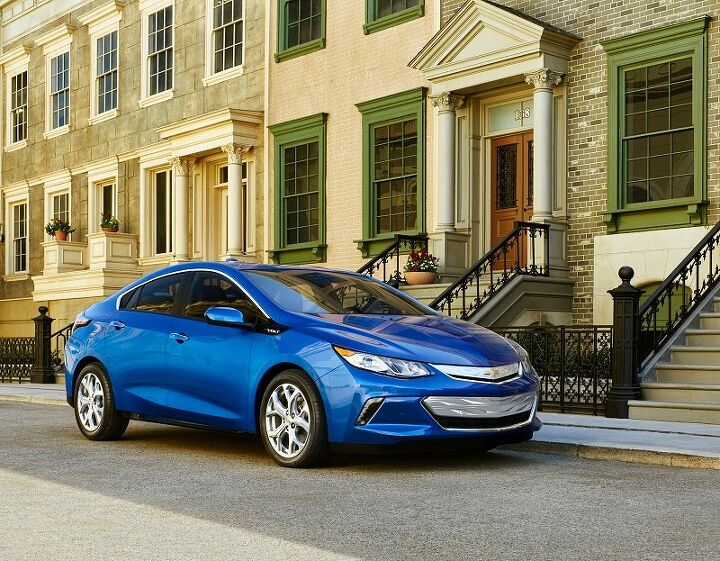




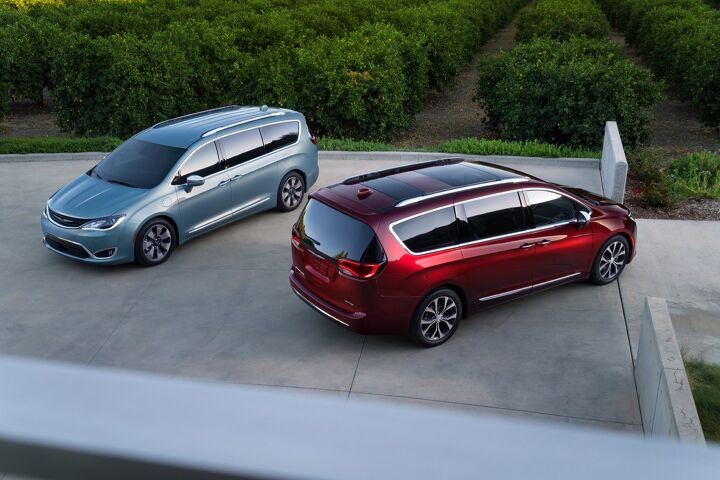


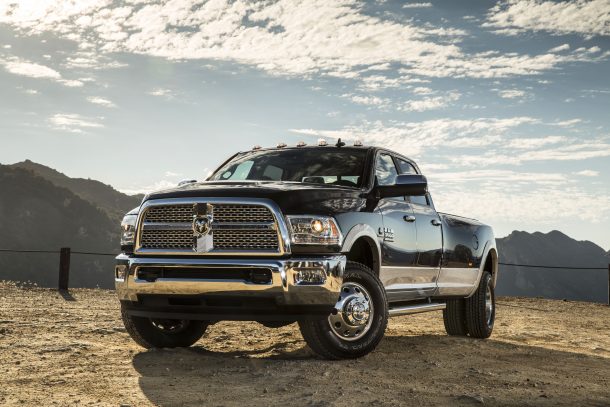

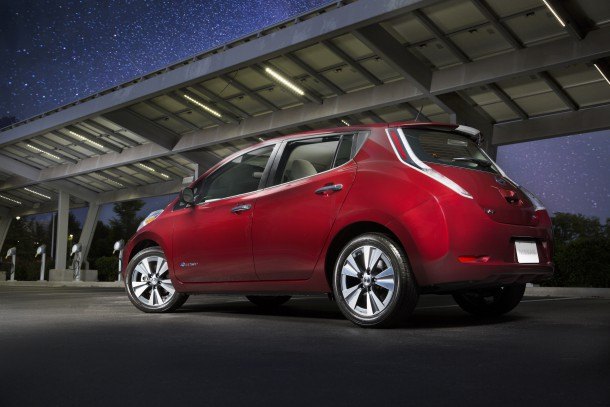



















Recent Comments